You’ve slapped it on burgers, grilled it to gooey perfection, and maybe even eaten it straight from the wrapper. American cheese is a staple in lunchboxes, diners, and fast food chains across the country. But here’s the surprising twist—legally, American cheese isn’t actually cheese. Yep, you read that right.
Despite its creamy texture and irresistible melt, American cheese doesn’t meet the FDA’s standards to qualify as real cheese. It lives in a legal grey zone, forced to go by names like “processed cheese,” “cheese food,” or “cheese product.” The reason? It’s often less than 50% actual cheese by weight. The rest is a medley of emulsifiers, preservatives, and dairy-like fillers that extend shelf life and perfect that signature melt—but at a cost.
Behind that smooth orange slice is a carefully engineered product designed more in labs than on farms. While traditional cheeses are aged, cultured, and crafted through centuries-old techniques, American cheese is essentially the Frankenstein of the dairy aisle. Its longer shelf life and flawless melt are marvels of modern food science, but they come at the price of nutrition and authenticity.
And while it may be convenient, tasty, and nostalgic, there’s a reason food labels dance around calling it “cheese.” This isn’t just semantics—it’s food regulation. Whether you’re a diehard fan or a curious skeptic, the story behind American cheese is anything but bland. From wartime innovation to industrial shortcuts, there’s more to that humble square than meets the eye.
So next time you peel back a slice, you might find yourself wondering: is this really cheese… or just a very clever imposter?
1. The Legal Definition Gap
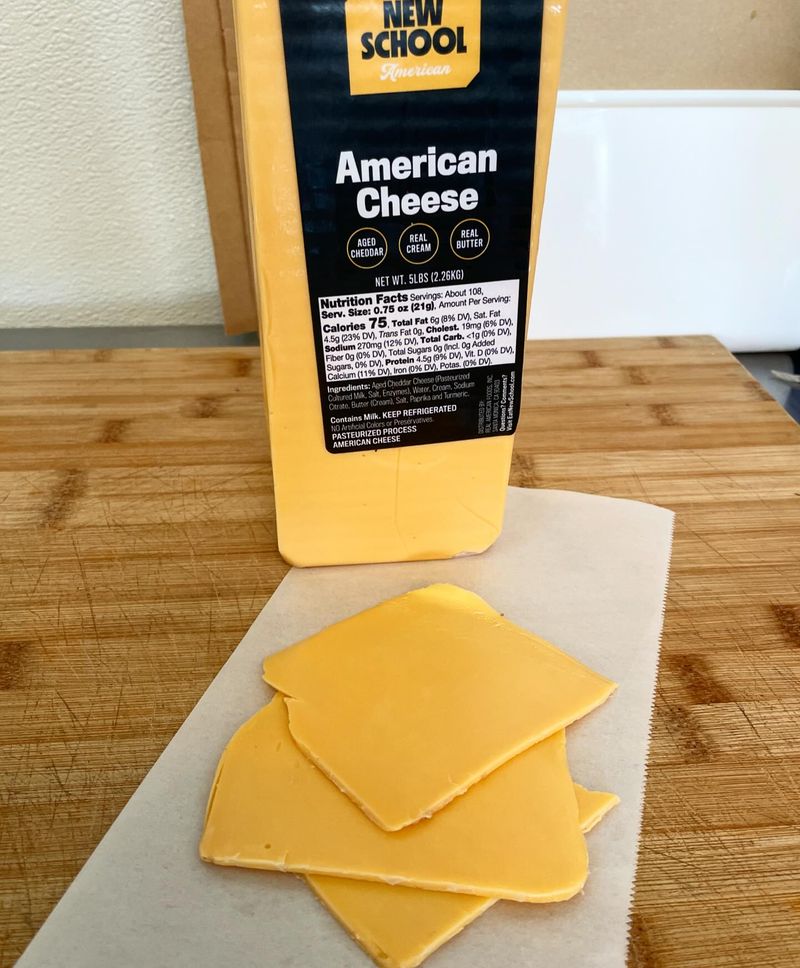
American cheese fails to meet the FDA’s strict definition of ‘cheese.’ According to regulations, real cheese must contain at least 50% actual cheese by weight. Most American cheese products contain only 20-30% cheese, with the rest being additives, emulsifiers, and other ingredients.
The government requires manufacturers to label these products as ‘processed cheese,’ ‘cheese product,’ or ‘cheese food’ instead. Next time you’re grocery shopping, check those labels carefully—you’ll notice terms like ‘pasteurized process cheese food’ rather than simply ‘cheese.’
2. More Chemistry Than Cheesemaking
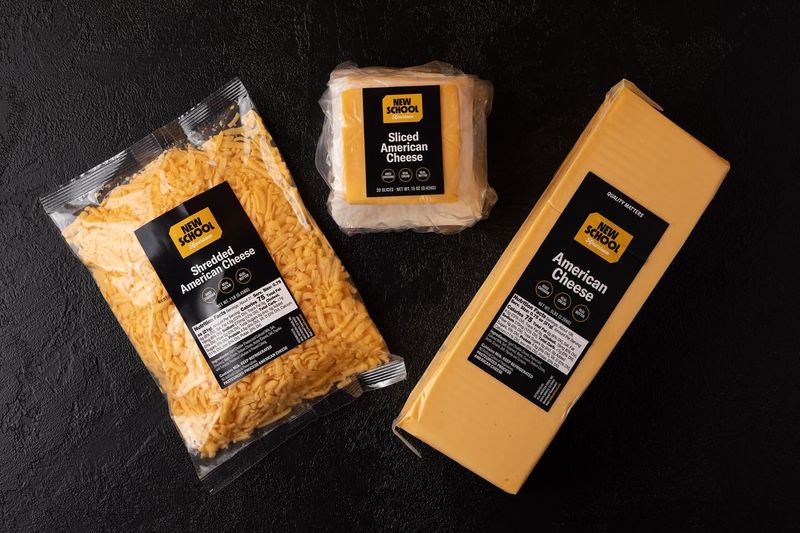
Traditional cheesemaking involves cultures, enzymes, and aging—a craft perfected over centuries. American cheese, however, emerges from a laboratory-like process where real cheese is melted down and mixed with emulsifying salts, preservatives, and food coloring.
The primary emulsifier, sodium citrate, prevents oil separation when heated. This chemical intervention creates that signature melt-in-your-mouth texture that doesn’t occur naturally. The scientific transformation fundamentally alters the original cheese’s properties, creating something that’s more food science than traditional dairy craft.
3. The Melting Magic Mystery
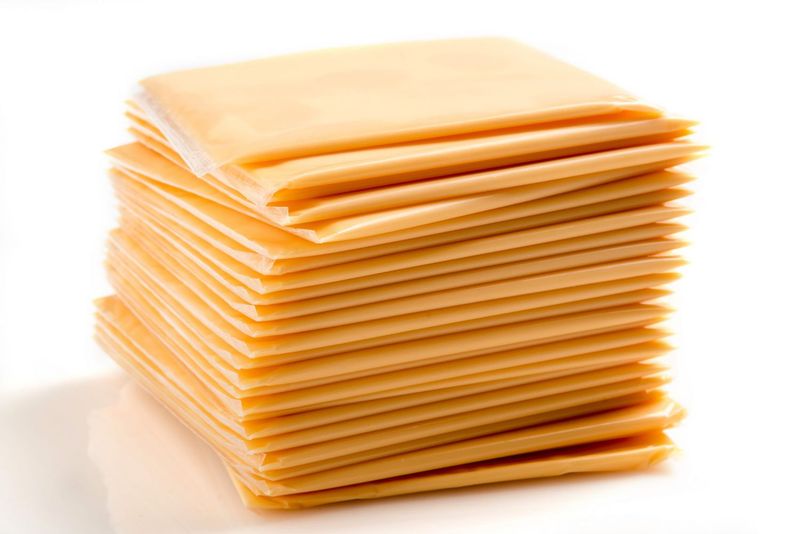
Ever wonder why American cheese melts so perfectly on burgers without separating into oil and solids? That’s not natural cheese behavior—it’s food engineering at work! Natural cheeses contain proteins that clump when heated, causing that greasy separation.
American cheese’s emulsifiers prevent this by keeping fat molecules evenly distributed even when heated. James L. Kraft patented this process in 1916, revolutionizing the food industry. The ultra-smooth melt comes at a cost: fewer complex flavors and a texture that some cheese connoisseurs describe as ‘plastic-like’ when unmelted.
4. Shelf Life That Defies Nature
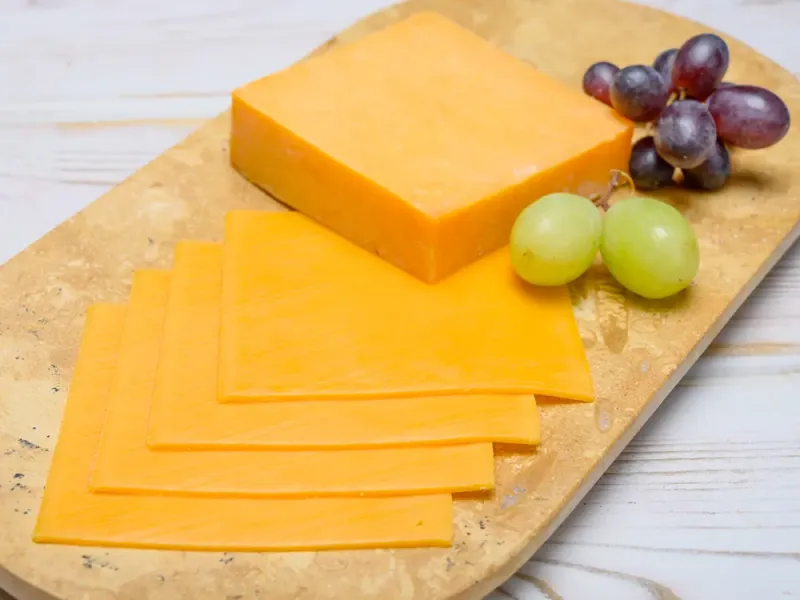
Real cheese is alive with beneficial bacteria that continue to develop flavors—but also eventually spoil. American cheese contains preservatives that halt this natural aging process, extending shelf life dramatically. Some varieties can last months unrefrigerated!
The preservation process began during World War II when the military needed non-perishable food for troops. Calcium propionate, sorbic acid, and sodium phosphate are common preservatives that prevent mold growth and bacterial activity.
While convenient, this longevity means American cheese misses out on the complex flavor development that makes aged cheeses so prized by culinary experts.
5. The Nutritional Compromise
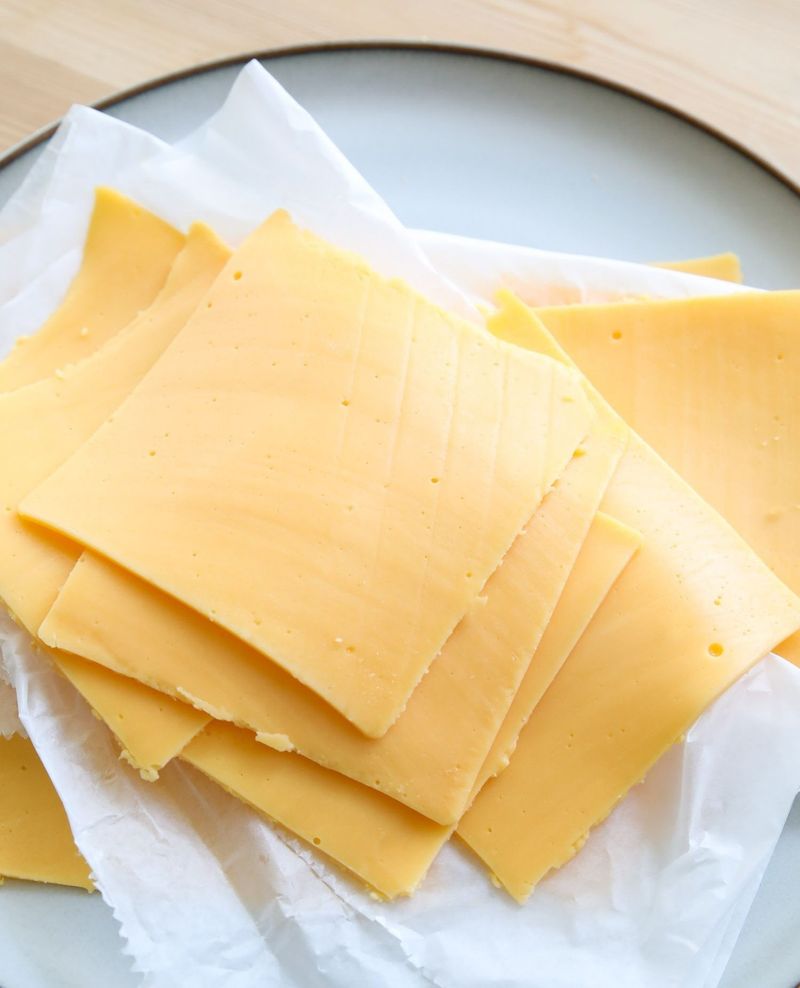
The processing that creates American cheese strips away many nutritional benefits found in natural cheese. While containing calcium and protein, American cheese typically has more sodium, artificial ingredients, and fewer beneficial enzymes than its authentic counterparts.
Many varieties contain milk protein concentrate—a cheaper substitute for real milk—plus coloring agents like annatto or artificial yellow dye. Some budget brands even include vegetable oils instead of dairy fat.
Lactose-intolerant folks beware: unlike aged cheeses where lactose diminishes during aging, American cheese often contains added milk solids that increase lactose content, making it potentially more problematic for sensitive individuals.
Leave a comment